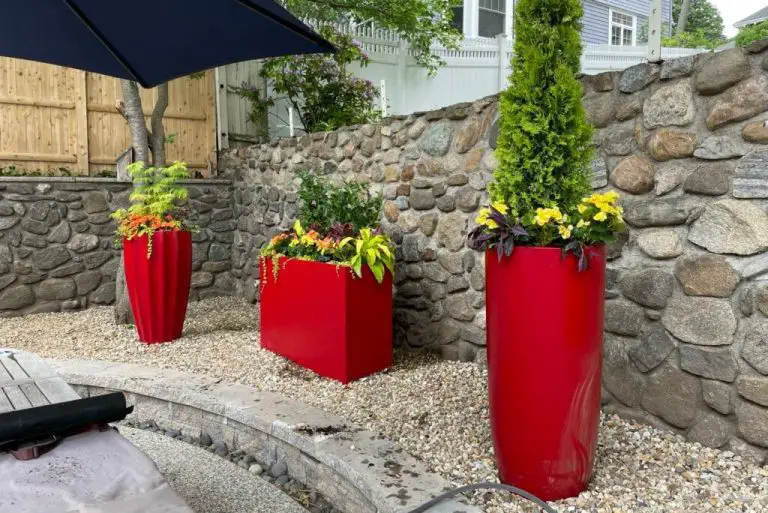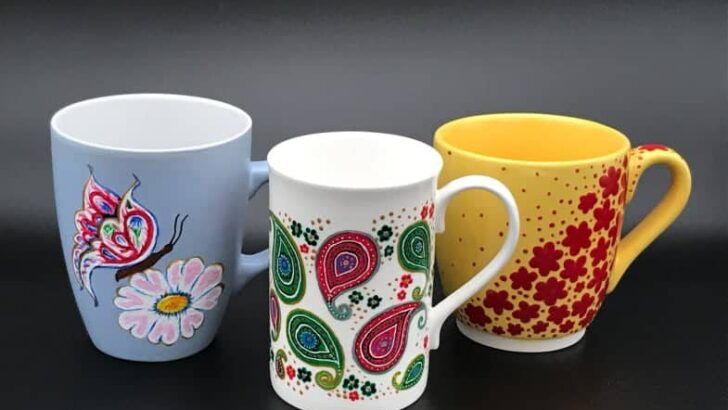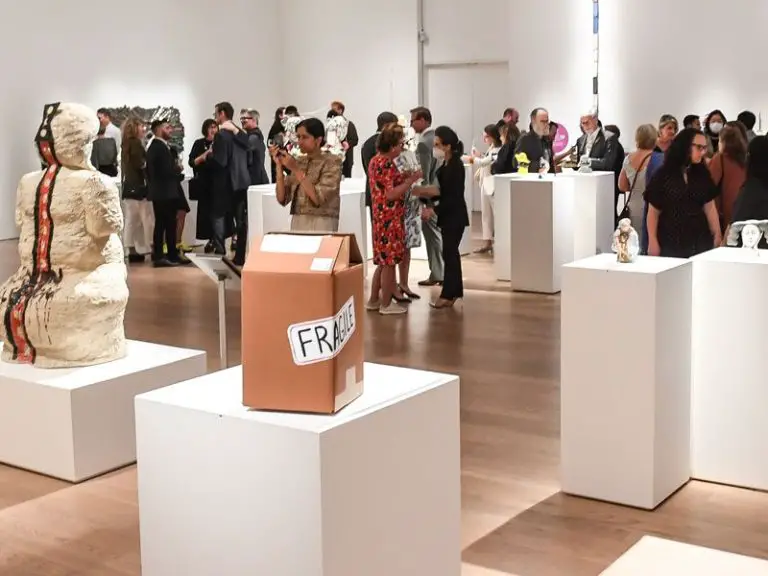What Is Kiln In Fine Art?
What is a Kiln?
A kiln is an oven-like device used for firing or heating materials to high temperatures for processes such as ceramic production, glassmaking, metal casting, and forging. Kilns use fuels like wood, gas, coal, or electricity to produce heat through combustion or heating elements and insulate that heat inside the kiln chamber.
There are several main types of kilns used in fine art applications:
- Ceramic kilns – Used to fire clay and ceramic work. Ceramic kilns can be small electric kilns used by individual potters or large industrial-scale tunnel or car kilns used in ceramic production.
- Glass kilns – Designed to produce the high temperatures needed for glass fusing, slumping, casting, and blowing. Most are electric.
- Metal clay kilns – Small electric kilns that fire metal clay jewelry and small objects.
Kilns allow consistent results by controlling the heating and cooling process. This makes them an indispensable tool for artists working with ceramic, glass, and other materials requiring high heat. The type of kiln required depends on the material, production volume, and artistic application.
History of Kilns in Art
The earliest evidence of kilns used for firing clay date back to around 6000 BCE in the Near East, according to archaeological findings and radiocarbon dating, including the kiln discovered at Yarim Tepe. These early kilns were basic pit firing kilns dug into the ground to provide insulation. Pottery and ceramic vessels fired in these simple kilns were an important technological development that allowed early civilizations to store and transport food safely.
Regional kiln designs and traditions emerged over the next several thousand years. Kilns evolved to have above-ground structures made of brick or stone, allowing better airflow and heat control. By around 2000 BCE, ancient Greek potters had developed an updraft style kiln known as the “pithos” kiln. This circular design with a domed roof was well-suited for firing large ceramic storage vessels. The ancient Greeks further improved kiln technology, pioneering the use of pyrometric cones to measure heat work.
Notable innovations continued into medieval times and beyond. The invention of glaze firing led to new kiln designs in ancient China during the Shang dynasty circa 1600 BCE. The climbable step-kiln allowed stacking shelves of ceramics for more efficient high-volume production. In the 14th century, bottle kilns emerged in Europe for firing porcelain. Modern electric and gas kilns were developed in the 20th century, offering unprecedented precision and control.
Kiln Firing Process
Loading the kiln properly is a crucial first step in the firing process. Pieces should be loaded so they are evenly spaced and supported, allowing heat to circulate evenly. According to Soul Ceramics, pieces can be loaded on kiln shelves, posts, or firing stilts (Soul Ceramics). It’s important not to overload the kiln, as crowding can lead to uneven firing.
The firing process involves several stages as the kiln temperature increases. First, water evaporates from the clay body during the drying stage, beginning around 212°F. As the temperature increases to about 1100°F, chemical changes begin to take place in the clay body during the bisque firing stage. This transforms the clay from its fragile greenware state into hardened bisqueware (That Art Teacher). The final glaze firing stage occurs from about 2100-2300°F, melting the glaze materials so they fuse with the bisqueware body.
Careful monitoring and controlling of the target temperatures is necessary at each stage for proper firing. Kilns allow setting firing schedules that adjust heating elements to follow a programmed ramp up and down cycle. Using pyrometric cones placed in the kiln provides another means to gauge when target temperatures have been reached.
Clay and Ceramics
There are several types of clay that are commonly used in ceramic arts, each with their own properties and firing requirements. The most common clay types are:
Earthenware – A porous, opaque clay that fires at lower temperatures, typically between 1750-2100°F. Earthenware is easier to work with but less durable than other clays. It is commonly used for handbuilt pottery, tiles, and decorative pieces.
Stoneware – A strong, nonporous clay that becomes vitrified and watertight at high firing temperatures between 2200-2400°F. Stoneware clays are commonly used for functional pottery and tableware.
Porcelain – A fine white clay that fires at very high temperatures, between 2200-2400°F. Porcelain is highly vitrified and translucent. It is more difficult to work with than other clays but produces delicate, durable pieces.
Clay can be decorated using different colored glazes and surface techniques. Glazes contain mixtures of minerals that fuse with the clay body during firing to create a glassy coating. Popular decorative techniques include scraffito, slip trailing, sgraffito, mishima, and raku firing (The Pottery Wheel).
Glassmaking
Glass is an amorphous solid that can be molded into intricate shapes through various techniques. The chemistry of glass consists mainly of silica, soda, and lime which lower the melting point to a workable range. Adding various metal oxides produces different colors and properties like transparency.
The three major glass techniques utilized in kilns are glassblowing, fusing, and slumping. Glassblowing involves blowing and shaping glass by tube into vessels or sculptures. The glass is heated to a molten state in the kiln before being rolled on a metal table to shape it. Fusing glass involves joining separate pieces of glass together by heating them to high temperatures. The glass pieces soften and fuse together into the desired design. Slumping involves heating a flat piece of glass until it sags over a mold to form a three dimensional shape.
Metal Casting and Forging
Kilns play an important role in metalworking processes like casting and forging. Metals like bronze, iron, and aluminum are commonly used for casting. The process involves melting down metal into a liquid state and then pouring it into a mold to create the desired shape. A kiln provides the high temperatures needed to melt these metals, which have high melting points.
Metal casting requires making a mold out of sand, clay, or other materials that can withstand the heat. The mold is made in two halves and is designed with channels for the melted metal to flow through. Once the mold is ready, the metal is melted in the kiln and carefully poured into the mold. After cooling and hardening, the mold is broken and the finished cast piece removed.
Forging is shaping heated metal using tools like hammers and presses. The metal is heated in a kiln or forge to make it malleable enough to shape. Forging allows the artist to form more complex or intricate shapes than casting. After forging into the desired form, the metal must be annealed by slowly cooling it to remove stresses and prevent brittleness.
Kilns allow metal artists to gain complete control over the heating and cooling process, which is essential for successfully casting and forging metal artworks.
Other Materials
Kilns are commonly used to fire clay and ceramics, but they can also be used to process other types of materials in art and industry. Some examples include:
Mosaics: Small pieces of glass, stone, ceramic, or other materials can be fired in a kiln to create a fused glass mosaic design. The heat melds the pieces together into a cohesive design. Kiln-fired mosaics can be used decoratively for murals, countertops, backsplashes, and more. Kilns allow for precise control over the melting of the mosaic materials.
Enameling: Vitreous enamel can be applied to metal surfaces and fired in a kiln to produce a glossy, glass-like coating for jewelry, cookware, art, and more. The heat fuses the powdered glass to the metal substrate. Enameling kilns are specifically designed to withstand the rapid heating and cooling cycles needed.
Pottery and Sculpture: Many non-clay materials like glass, metal oxides, refractory materials, and combustible substances can be shaped or molded and then fired in a kiln. This allows artists to create mixed media sculptures, vessels, wall hangings, and more. Careful kiln programming is needed to achieve the desired effects.
Kiln Designs
There are several key factors that go into the design of a kiln. These include the fuel type, the shape and lining of the chamber, and the chimney or venting system.
The most common fuels used to fire kilns are gas, electricity, and wood. Gas kilns utilize natural gas or propane and heat up quickly while allowing precise temperature control. Electric kilns are powered by resistive heating elements and offer clean, easily-controlled heat. Wood-fired kilns use renewable wood fuel but require more skill to operate and achieve desired results.
The shape and lining of the kiln chamber impacts heating patterns and efficiency. Round and oval layouts promote even heating while square kilns can have hotspots. The lining or refractory material insulates the outer shell and withstands high temperatures. Common options are firebricks and ceramic fiber blankets. The thickness and quality of the lining affects heating performance.
Most kilns have a chimney or venting system to remove smoke, fumes, and heat. Short chimneys use natural draft while tall chimneys improve airflow. Adjustable vents give further control over circulation. Down-draft vents pull air down through the chamber. Some kilns recirculate heat while others vent externally through a chimney.
Studio Safety
Working with kilns requires taking proper safety precautions. Here are some key tips for staying safe in the studio:
Proper Ventilation
Kilns generate a lot of heat and potentially harmful fumes, so proper ventilation is essential. Use kilns in well-ventilated areas or set up fans and vents to circulate fresh air. Avoid breathing in any dust or fumes produced during firing. Consider wearing a N95 respirator mask while loading/unloading kilns.
Protective Equipment
Always wear heat-resistant gloves when handling hot items from a kiln. Wear safety goggles to protect your eyes from dust and debris. Wear an apron or studio coat to protect your clothing. Closed toe shoes are recommended for foot protection.
Monitoring the Kiln
Carefully monitor kilns during the entire firing process to ensure proper temperatures are maintained. Make sure kilns are not left unattended once firing begins. Test and maintain kilns regularly to prevent potential electrical or mechanical hazards. Have a plan in place in case of emergencies.
Notable Kiln Artists
Kilns play an integral role in the artwork of many famous ceramicists, glass artists, and metalworkers. Some of the most well-known kiln artists include:
Bernard Leach (1887–1979) was an influential British studio potter who helped establish the studio pottery movement. He built a large wood-fired kiln in St Ives, England where he produced stoneware, earthenware, and porcelain pieces inspired by Japanese and Chinese ceramics. His notable works include lidded jars, vases, and tableware.1
Dale Chihuly (b. 1941) is an American glass sculptor known for his ambitious installations made from blown glass forms. To create his vibrant, organic sculptures, Chihuly relies on teams of skilled glassblowers and multiple electric and gas-fired glass kilns. Some of his most famous works include Chandeliers, the Fiori series, and large architectural installations.2
Georges Jeanclos (1933-1997) was a French abstract sculptor who worked primarily in bronze. He was part of the Nouvelle Generation school and created fluid, minimalist forms. To cast his bronze sculptures, Jeanclos used lost-wax kiln casting, a technique involving multiple firings to melt and pour the hot liquid bronze. His notable bronze sculptures include La Vague and Le Double.



